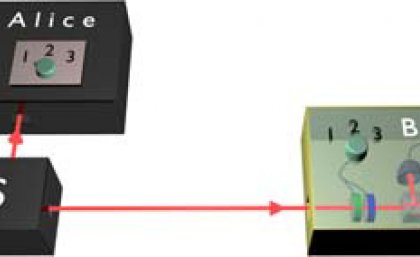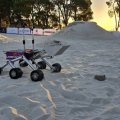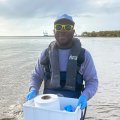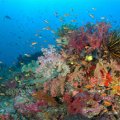
Experiments with entangled photons have led the way in the burgeoning fields of quantum information, communication and computation in the last decade.
Their biggest drawback has always been low photon-detection efficiencies, which has limited their potential applications.
Now, a joint experiment by Australian and US labs has fixed this problem, doubling the previous record in entangled photon detection ratio to 62 per cent, and closing the detection “loophole” in the strange phenomenon of quantum steering.
The experiment was conducted by researchers at The University of Queensland, Griffith University, the ARC Centre for Engineered Quantum Systems and the ARC Centre for Quantum Computation and Communication Technology in Australia; and the National Institute of Standards and Technology in Boulder, USA.
Austrian physicist Erwin Schrödinger first introduced the term steering in 1935 to highlight the ability of certain quantum particles to influence—or steer—each other no matter how far they are apart.
This striking effect is the result of quantum entanglement—a phenomenon that connects two particles in such a way that changes to one of the particles are instantly reflected in the other—something that Einstein famously described as “spooky action-at-a-distance”.
Steering allows two parties to verify if they have received quantum particles that share this quantum entanglement—even if one of the parties cannot be trusted.
However, if there are any loopholes—which occur due to problems with the experimental design or set-up—the parties will not be able to say that they have conclusively observed quantum steering.
“We overcame the detection loophole—where not all the photons can be detected—by combining a highly-efficient entangled photon source with state-of-the-art photon detectors,” said Dr Marcelo de Almeida of The University of Queensland.
These detectors—called transition edge sensors —were developed by Dr Sae Woo Nam and his team at the National Institute of Standards and Technology.
“The absorption of a single photon in such detectors causes a tiny change in the temperature which is sensed using superconducting effects,” Dr Almeida said.
“Closing the detection loophole requires efficiencies of above 50 per cent.
"The remarkably high efficiency of 62 per cent achieved in our experiment allows us to demonstrate conclusive steering.”
Dr Almeida’s UQ-based co-authors include PhD students Devin H. Smith, Geoff Gillett, Drs Alessandro Fedrizzi, Till J. Weinhold, and Cyril Branciard, and Professor Andrew G. White, all from the ARC Centre for Engineered Quantum Systems (EQuS) and the ARC Centre for Quantum Computation and Communication Technology (CQC2T), as well as Professor Howard M. Wiseman from Griffith University, also of CQC2T.
This record-breaking achievement, published in Nature Communications today, brings the researchers a step closer toward achieving even higher detection efficiency levels in the near future.
"If we can achieve 66 per cent, then we could perform secure quantum communication even if one party has untrustworthy equipment. Five years ago I would have thought that was impossible,” said Dr Almeida.
Media: Dr Marcelo de Almeida (07 334 67347, marcelo@physics.uq.edu.au) or School of Mathematics and Physics Communications & Marketing Officer Aarti Kapoor (07 3346 9935, a.kapoor@uq.edu.au)










